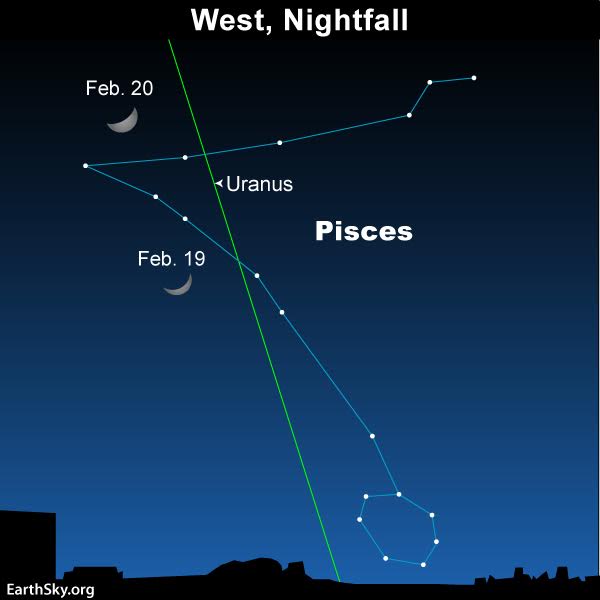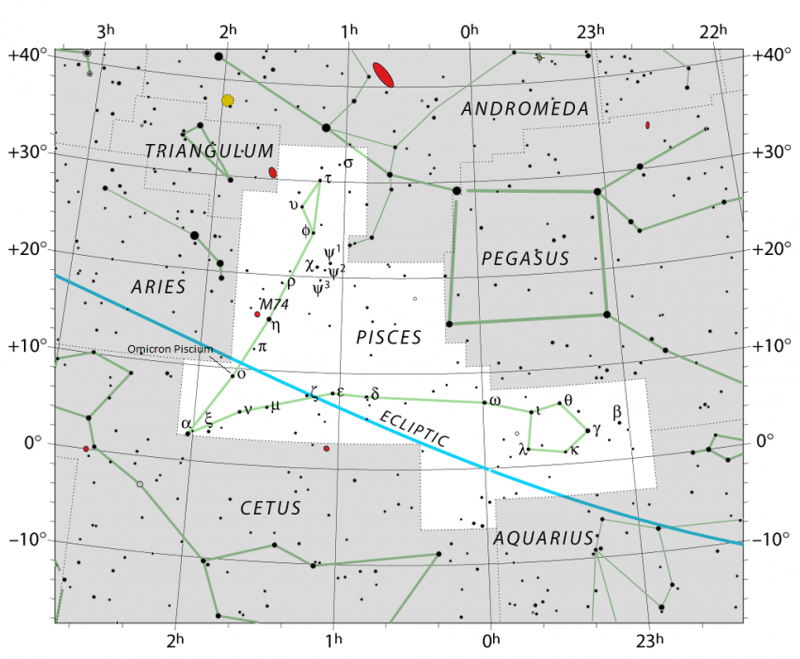Moon and Uranus February 19 and 20 (earthsky.org)
By Bruce McClure in Tonight | February 19, 2018

On February 19 and 20, 2018, the waxing crescent moon and planet Uranus both lie in front of the constellation Pisces the Fishes. It’s best to look for Uranus when the moon is out of the way. Use the moon’s location to identify the faint V of Pisces Monday or Tuesday evening, then wait for the moon to move away to look for Uranus.
On a dark, moonless night, people with extraordinary vision do sometimes spot Uranus as a faint speck of light with the unaided eye. You’ll have better luck looking for Uranus with binoculars. A good familiarity with Pisces and a detailed sky chart come in handy. Uranus is currently located inside the V of Pisces. It’s fairly near the bottom tip of the V. Look on the star chart below. Do you see the faint 4th-magnitude star Omicron Piscium? It’s visible to the unaided eye in a dark sky.

Then look for the planet Uranus in the same binocular field as Omicron Piscium.
***
The moon will pass out of constellation Pisces and into the constellation Aries after a day or two. But Uranus won’t move into Aries until May 2018, at which time Uranus will have moved into the morning sky.
***
more (incl. charts): http://earthsky.org/tonight/moon-uranus-in-pisces-2
NB: The red ellipses in the chart are the Andromeda and Triangulum galaxies, M31 and M33. The tiny red dot is the galaxy M74, the 2nd faintest Messier object. Quite a show for one night!
Uranus is kind of fascinating to me because it's just barely below naked-eye recognition as a planet. Apparently, Galileo noticed the motion of Uranus but didn't report it (!). Herschel discovered Uranus with a 6.25" speculum reflector in 1781 -- the last time a planet could be discovered so easily. He was a professional musician, playing at least four instruments as well as composing, at the time. Reading his biography at Wikipedia reminds me of a remark by Tom Lehrer -- "it's people like that who make you realize how little you've accomplished". Sister Caroline was no slacker either !

